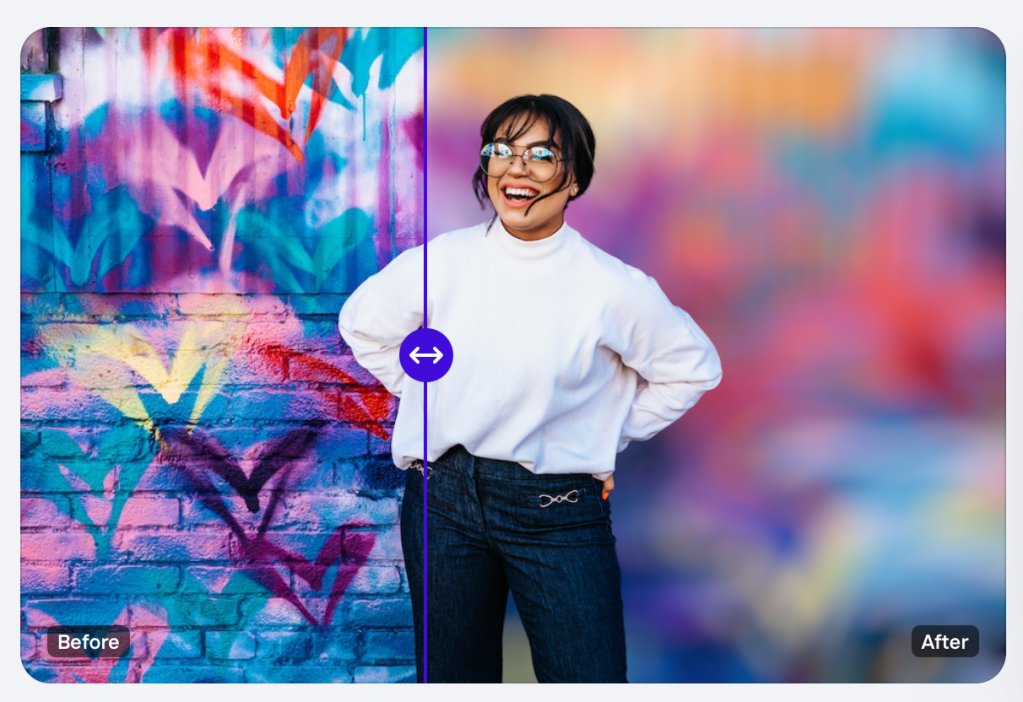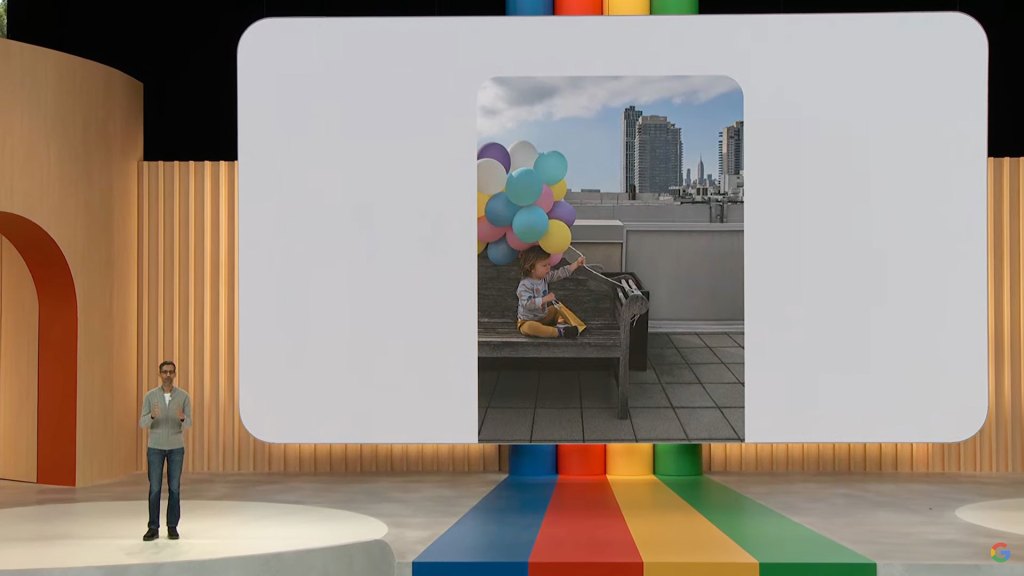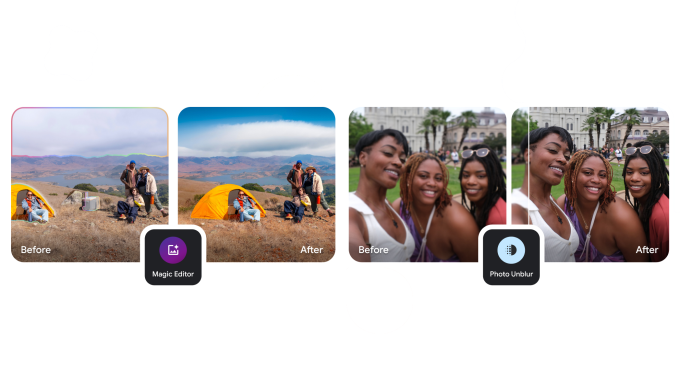
Apps that let users take, manipulate and share images have been some of the biggest hits in the world of mobile over the years. Now, the influx of AI is cracking open the market for a new wave of startups to step into the ring.
Photoroom — a startup out of Paris, France — has built a popular AI-based image editing app and API targeting e-commerce vendors, media specialists, and others. (It’s even been used to power a Barbie personalised poster site.) TechCrunch now understands that the startup is in the process of closing a round of funding.
Multiple sources say that the startup is raising between $50 million and $60 million on a pre-money valuation of between $500 million and $600 million. In a market where AI is hot, but funding overall remains very constrained (and some big-name VCs, such as Coatue, are actually now retreating), Photoroom has been turning heads — and getting people to open checkbooks, it seems.
It is unclear who the full investor list is. One source said that Balderton, which led the startup’s previous round, is leading this round, too. Others said that other previous backers were also participating along with new investors. “They are choosing between different term sheets,” one source said.
In addition to Balderton, existing backers include Adjacent, Kima Ventures, FJ Labs, Meta, Y Combinator (where it was a member of the Summer 2020 cohort, its first remote batch in the wake of Covid-19) and a number of angels such as Yann LeCun, Zehan Wang (formerly of Magic Pony and Twitter), execs from Hugging Face and Disney+, and many more. Photoroom will have raised $70-80 million all told if this round closes at these numbers.
Photoroom, and Matthieu Rouif, the CEO who co-founded Photoroom with CTO Eliot Andres, declined to comment on any funding-related questions. Balderton did not respond to requests for comment for this story. Others asked to remain unattributed.
Paris, where Photoroom is based, has shaped up to be a key city for AI development.
In addition to a wave of other smaller startups, Meta has a large AI lab there headed by Yann LeCun; Hugging Face, now based in NYC, got its start out of Paris; and Mistral AI, ambitiously building foundational Large Language Models that it wants to keep open source, is now valued at $2 billion.
Photoroom’s rise also follows other currents washing over the tech world at the moment, which transcend the current vogue around AI.
Over the years, the camera has become easily the most important feature on smartphones, arguably more significant than basic phone features themselves. Yet most of that trend’s riches have fallen to consumer apps and their ecosystems. Photoroom partly stands out for its primary positioning, at least for now, as a B2B tool.
Early on, Photoroom found traction with a long tail of small businesses, e-commerce vendors and resellers looking for photo editing software that was fast, easy to use and cost-effective, but still produced high quality results on individual images or batches of them: users can clip images out from backgrounds and then apply other effects, some of which can be prompted and generated by word commands. Customers use those images in online sales listings on platforms like Depop, eBay and Poshmark.
And by way of its API, Photoroom has also found an audience among a set of bigger customers. Warner Bros used the API to create a social marketing campaign for the Barbie movie this summer: fans were able to crop their own images and insert them into their own personalized Barbie posters. The tool and resulting posters were shared over 1 million times, Photoroom said.
In addition to Warner Brothers, Netflix and the online food delivery startup Wolt, among others, are using its tools for a wider set of use cases.
It also has built up credibility among its peers in the tech community.
I'm blown away with how well @photoroom_app works ✨👌 pic.twitter.com/vZRfYYNmVh
— Hus (@hsavas) January 6, 2024
Up to now, Photoroom has been building its platform based on its own vision models, trained on its own data — one way of making sure to have better control over those images and avoid copyright issues down the line. It uses tools like Dust to combine these with LLMs from third parties to build new functionality. Last year, for example, the company used GPT-4 to enhance its “instant backgrounds” feature with suggested scenes that could be generated with word prompts. The company is continuing to build, adding an enhanced shadow feature to its API just last week.
What’s also important (especially right now) is that, in addition to the expanding feature set, Photoroom’s B2B focus has helped it anchor its growth around a revenue-generating business model.
The product has a freemium tier in the form of a limited set of features can be used on a limited number of images for no cost. But there are also different pricing tiers that vary by country (in the U.K., the basic Pro tier on mobile is £3.99/week or £69.99 annually). There are also separate rates for web users, Shopify customers, larger business users, and for its API.
Adding all this together, since its last round in 2022, when it raised $19 million, Photoroom has been blowing up.
In the key market of the U.S., according to Data.ai figures, its iOS app is currently number-three among all graphics and design apps, and it’s been comfortably in the top 10 for the last three months, sometimes at number one. On Android currently it’s the number-one photography app in the U.S.
SimilarWeb pegs the number of monthly web visitors at just over 27 million as of December 2023, with figures rising over the three months prior by over 18%; but that’s just a small part of its base: nearly 90% of the app’s traffic and usage comes via mobile app.
The company told TechCrunch in December that in the three years since launch, it had reached more than 100 million downloads of its apps and was on track for ARR of $50 million.
But it’s not all smooth sailing. Photoroom is certainly not the only photo editing tool out there targeting businesses and growing: the dozens of competitors/alternatives range from Picsart, which has raised nearly $200 million, through to the much more modestly-proportioned Pixelcut, which has raised only $250k, according to PitchBook.
Nonetheless, rising tides lift boats. There has been a huge amount of buzz around generative AI among investors themselves looking for the next big hit.
In September last year, on the heels of the surge of interest in gen AI in the wake of ChatGPT, Andreessen Horowitz consumer partner Olivia Moore published some research running the numbers for popular generative AI apps.
The report ranked Photoroom as the sixth most-popular generative AI product. While ChatGPT was, unsurprisingly, far and away the most popular gen-AI product of all, the main takeaway was that the space was still very young. Most categories of apps, she wrote, are still up for grabs; and within the popular area of AI image-based tools, apps like Photoroom, in her opinion, have a shot at success.
“Products that are purpose-built for specific use cases or workflows are growing alongside more generalist tools, and showing signs that they can also become successful companies,” wrote Moore.
A spokesperson for Photoroom specifically pointed TC to the a16z research when contacted for comment, although she declined to say whether a16z is one of the investors in the company. We have contacted a16z to ask, too, and will update this story as we learn more.



